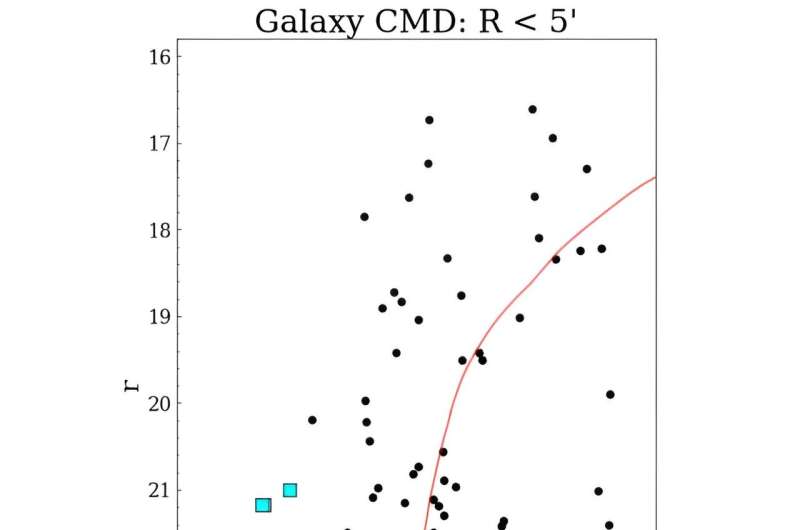November 25, 2023 report
This article has been reviewed according to Science X's editorial process and policies. Editors have highlighted the following attributes while ensuring the content's credibility:
fact-checked
preprint
trusted source
proofread
KiDS in the sky: New stellar system discovered by the Kilo-Degree Survey

Astronomers have discovered a new stellar system in the outskirts of the Milky Way as part of the Kilo-Degree Survey (KiDS). The newfound system, named Sextans II, is most likely an ultra-faint dwarf galaxy. The finding is reported in a paper published November 10 on the pre-print server arXiv.
KiDS is an extensive multi-band photometric survey utilizing the VLT Survey Telescope (VST) at ESO's Paranal Observatory in Chile. Since 2011, the survey has been mapping 1,350 square degrees of the night sky in four broad-band filters (u, g, r, i). Although KiDS is focused on the assembly of large-scale structures in the universe, it may also detect low-surface brightness extragalactic stellar systems.
That is why a team of astronomers led by Massimiliano Gatto of the Astronomical Observatory of Capodimonte in Naples, Italy, decided to conduct a large-scale search for unknown faint stellar systems with KiDS. For this purpose, they looked for low-luminosity stellar overdensities in the KiDS latest data release (DR4), which brought promising results.
"We report on the discovery of a significant and compact over-density of old and metal-poor stars in the KiDS survey (data release 4)," the researchers wrote in the paper.
The team identified a highly promising overdensity of stars in the Sextans constellation with an absolute integrated magnitude of -3.9. Follow-up observations of this overdensity with the 8.2-meter Subaru Telescope confirmed that it is a stellar system located some 473,000 light years away.
The astronomers initially designated the newfound system KiDS-UFD-1 and dubbed it Sextans II. The collected data indicate that Sextans II is relatively small, with a half-light radius of about 629 light years, while its mass is estimated to be 4,910 solar masses. The system has a metallicity at a level of -1.5 dex, ellipticity of 0.46, and is at least 10 billion years old.
According to the authors of the paper, the results indicate that Sextans II is a faint, old and metal-poor system. Gatto's team concluded that the newly detected stellar system is a faint spheroidal satellite of the Milky Way, most likely an ultra-faint dwarf (UFD) galaxy. In general, UFDs are the least luminous, most dark matter–dominated, and least chemically evolved galaxies known.
However, the researchers do not exclude the possibility that Sextans II may be a disrupting globular cluster, adding that further investigation of this system is needed to confirm its true nature.
"The final word on the nature of the system can be provided only by a proper spectroscopic follow up of a reasonable sample of member stars, that may be challenging, given the magnitude range spanned by candidate RGB members," the scientists wrote.
More information: Massimiliano Gatto et al, New Kids in Town. Sextans~II: a new stellar system in the outskirts of the Milky Way, arXiv (2023). DOI: 10.48550/arxiv.2311.06037
Journal information: arXiv
© 2023 Science X Network




















